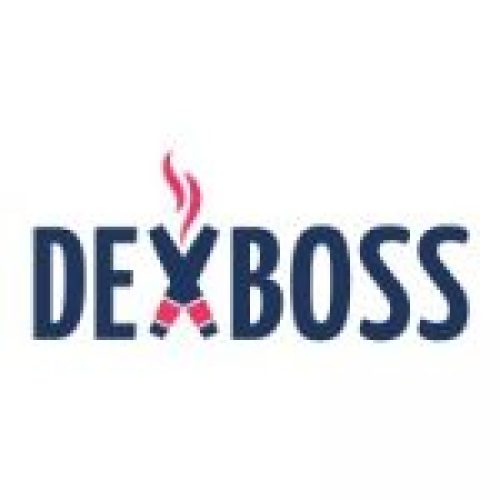In recent years, blockchain technology has emerged as one of the most disruptive and transformative innovations of our time. From its humble beginnings as the underlying technology for cryptocurrencies, blockchain has evolved into a versatile solution with applications across various industries. As we delve into 2024 and beyond, it’s crucial to understand how the blockchain technology market is growing and shaping the future of business, finance, and technology.
In this comprehensive analysis, we’ll explore the current state of the blockchain market, examine key growth drivers, highlight emerging trends, and forecast future developments in this exciting field.
Table of Contents:
- Introduction to Blockchain Technology
- Current State of the Blockchain Market
- Key Drivers of Blockchain Market Growth
- Blockchain Industry Trends
- Blockchain Applications Across Sectors
- Blockchain Investment Landscape
- Emerging Blockchain Technologies
- Global Blockchain Market Analysis
- Challenges and Opportunities in Blockchain Adoption
- Blockchain Market Forecast: 2024 and Beyond
- Conclusion: The Future of Blockchain Technology
- Introduction to Blockchain Technology
Before diving into the market growth, let’s briefly recap what blockchain technology is and why it’s generating so much buzz.
Blockchain is a decentralized, distributed ledger technology that records transactions across a network of computers. Key features include:
- Decentralization: No single authority controls the network
- Transparency: All transactions are visible to network participants
- Immutability: Once recorded, data cannot be altered
- Security: Cryptographic techniques ensure data integrity
These characteristics make blockchain an attractive solution for various applications beyond cryptocurrencies, driving its rapid adoption and market growth.
- Current State of the Blockchain Market
The blockchain market has experienced remarkable growth in recent years. According to a report by Grand View Research, the global blockchain technology market size was valued at $10.02 billion in 2022 and is expected to expand at a compound annual growth rate (CAGR) of 87.7% from 2023 to 2030.
Key statistics:
- Market size: $10.02 billion (2022)
- Projected CAGR: 87.7% (2023-2030)
- Estimated market value by 2030: $1,431.54 billion
This explosive growth is driven by increasing adoption across various sectors, substantial investments, and ongoing technological advancements.
- Key Drivers of Blockchain Market Growth
Several factors are contributing to the rapid expansion of the blockchain technology market:
3.1 Increased Enterprise Adoption
Major corporations across industries are recognizing the potential of blockchain to streamline operations, enhance security, and improve transparency. Companies like IBM, Microsoft, and Amazon have developed blockchain-as-a-service (BaaS) platforms, making it easier for businesses to implement blockchain solutions.
3.2 Government Initiatives and Regulations
Governments worldwide are exploring blockchain applications for public services and implementing regulations to support blockchain adoption. For instance, the United States Congress has introduced several bills related to blockchain technology, including the “Blockchain Innovation Act” and the “Digital Commodity Exchange Act.”
3.3 Growing Demand for Secure Transactions
As cyber threats continue to evolve, businesses and individuals are seeking more secure ways to conduct transactions. Blockchain’s inherent security features make it an attractive solution for protecting sensitive data and preventing fraud.
3.4 Expansion of Decentralized Finance (DeFi)
The rise of DeFi applications has significantly contributed to blockchain market growth. DeFi platforms offer financial services without traditional intermediaries, attracting both individual and institutional investors.
3.5 Interoperability Advancements
Efforts to improve interoperability between different blockchain networks are making it easier for businesses to adopt and integrate blockchain solutions, further driving market growth.
- Blockchain Industry Trends
As the blockchain market evolves, several key trends are shaping its trajectory:
4.1 Rise of Non-Fungible Tokens (NFTs)
NFTs have exploded in popularity, with applications in art, gaming, and digital collectibles. This trend is expected to continue, with NFTs potentially revolutionizing ownership and authenticity verification in various industries.
4.2 Blockchain in Supply Chain Management
Companies are increasingly adopting blockchain to enhance supply chain transparency and traceability. For example, Walmart has implemented IBM’s Food Trust blockchain to track the origin of food products.
4.3 Central Bank Digital Currencies (CBDCs)
Many central banks, including the Federal Reserve, are exploring or developing CBDCs. This trend is likely to accelerate blockchain adoption in the financial sector.
4.4 Green Blockchain Initiatives
As environmental concerns grow, there’s an increasing focus on developing energy-efficient blockchain solutions. Ethereum’s transition to a proof-of-stake consensus mechanism is a notable example of this trend.
4.5 Blockchain in Healthcare
The healthcare industry is leveraging blockchain for secure patient data management, drug traceability, and clinical trial management. Companies like Medicalchain are at the forefront of this trend.
- Blockchain Applications Across Sectors
The versatility of blockchain technology has led to its adoption across various industries:
5.1 Financial Services
- Cross-border payments
- Identity verification
- Trade finance
- Insurance claims processing
Example: Ripple is using blockchain to facilitate faster, cheaper cross-border payments.
5.2 Healthcare
- Electronic health records
- Drug supply chain management
- Clinical trial data management
- Medical credentialing
Example: Guardtime is partnering with governments to secure health records using blockchain.
5.3 Supply Chain and Logistics
- Product traceability
- Inventory management
- Counterfeit prevention
- Automated supplier payments
Example: VeChain offers blockchain-based supply chain management solutions for various industries.
5.4 Government and Public Sector
- Voting systems
- Land registry
- Digital identity management
- Tax collection and auditing
Example: Estonia has implemented blockchain technology in its e-Estonia program for various government services.
5.5 Energy and Utilities
- Peer-to-peer energy trading
- Renewable energy certificates
- Grid management
- Electric vehicle charging networks
Example: Power Ledger enables peer-to-peer energy trading using blockchain technology.
- Blockchain Investment Landscape
The blockchain market has attracted significant investment from venture capital firms, corporations, and governments:
6.1 Venture Capital Investments
According to CB Insights, blockchain startups raised $25.2 billion in venture capital funding in 2021, a 713% increase from 2020.
6.2 Corporate Investments
Major tech companies are heavily investing in blockchain technology:
- IBM: Developed IBM Blockchain Platform
- Microsoft: Offers Azure Blockchain Service
- Amazon: Provides Amazon Managed Blockchain
6.3 Government Investments
Governments worldwide are allocating funds for blockchain research and development:
- European Union: €340 million investment in blockchain projects (2018-2020)
- China: $1.4 billion blockchain innovation fund in Shenzhen
6.4 Initial Coin Offerings (ICOs) and Security Token Offerings (STOs)
While the ICO boom has subsided, STOs are gaining traction as a regulated method of fundraising using blockchain technology.
- Emerging Blockchain Technologies
Innovation in the blockchain space continues to drive market growth:
7.1 Layer 2 Scaling Solutions
Technologies like the Lightning Network for Bitcoin and Optimistic Rollups for Ethereum are addressing scalability issues, enabling faster and cheaper transactions.
7.2 Decentralized Identity
Blockchain-based identity solutions are emerging as a secure and privacy-preserving alternative to traditional identity management systems.
7.3 Blockchain Interoperability
Projects like Polkadot and Cosmos are focusing on creating interoperable blockchain networks, allowing different blockchains to communicate and share data.
7.4 Quantum-Resistant Blockchain
As quantum computing advances, researchers are developing quantum-resistant blockchain algorithms to ensure long-term security.
7.5 Blockchain-AI Integration
The combination of blockchain and artificial intelligence is opening up new possibilities in areas like secure data sharing for AI training and decentralized autonomous organizations (DAOs).
- Global Blockchain Market Analysis
The blockchain market is experiencing growth worldwide, with some regions leading the charge:
8.1 North America
North America, particularly the United States, remains the largest market for blockchain technology. The region benefits from a strong startup ecosystem, significant investments, and supportive regulatory environment.
8.2 Asia-Pacific
The Asia-Pacific region is the fastest-growing blockchain market, driven by adoption in countries like China, Japan, and South Korea. China, in particular, has made blockchain development a national priority.
8.3 Europe
European countries are actively exploring blockchain applications, with initiatives like the European Blockchain Services Infrastructure (EBSI) promoting adoption across the EU.
8.4 Middle East and Africa
Countries in the Middle East, such as the UAE and Saudi Arabia, are investing heavily in blockchain as part of their digital transformation initiatives.
- Challenges and Opportunities in Blockchain Adoption
Despite its rapid growth, the blockchain market faces several challenges:
9.1 Scalability
Many blockchain networks struggle with scalability issues, limiting their ability to handle high transaction volumes. However, this challenge presents opportunities for innovative scaling solutions.
9.2 Regulatory Uncertainty
The evolving regulatory landscape creates uncertainty for blockchain projects. Clear regulations could provide a framework for wider adoption and investment.
9.3 Interoperability
Lack of standardization and interoperability between different blockchain networks hinders widespread adoption. Projects focusing on cross-chain communication are addressing this issue.
9.4 Energy Consumption
The high energy consumption of some blockchain networks, particularly those using proof-of-work consensus, is a concern. This has led to increased interest in more energy-efficient alternatives.
9.5 Talent Shortage
The rapid growth of the blockchain industry has created a shortage of skilled developers and professionals. This presents opportunities for education and training programs.
- Blockchain Market Forecast: 2024 and Beyond
Looking ahead, several trends are likely to shape the blockchain market in 2024 and beyond:
10.1 Mainstream DeFi Adoption
As DeFi platforms mature and regulatory frameworks evolve, we can expect increased adoption by traditional financial institutions.
10.2 Enterprise Blockchain Solutions
The development of industry-specific blockchain solutions will accelerate, with a focus on scalability and interoperability.
10.3 Blockchain in IoT and Edge Computing
The integration of blockchain with Internet of Things (IoT) devices and edge computing will create new possibilities for secure, decentralized data management.
10.4 Expansion of CBDCs
More countries are likely to launch or pilot central bank digital currencies, driving blockchain adoption in the public sector.
10.5 Blockchain in Climate Action
Blockchain technology will play an increasing role in climate-related initiatives, such as carbon credit trading and renewable energy certification.
10.6 Growth of the Metaverse
As the concept of the metaverse gains traction, blockchain technology will be crucial for digital asset ownership and virtual economy management.
- Conclusion: The Future of Blockchain Technology
The blockchain technology market is poised for continued exponential growth in the coming years. Driven by increasing adoption across industries, significant investments, and ongoing technological innovations, blockchain is set to revolutionize how we conduct business, manage data, and interact in the digital world.
Key takeaways:
- The global blockchain market is projected to reach $1,431.54 billion by 2030
- Enterprise adoption, government initiatives, and the rise of DeFi are key growth drivers
- Emerging trends include NFTs, green blockchain initiatives, and blockchain-AI integration
- Challenges such as scalability and regulatory uncertainty present opportunities for innovation
- The future of blockchain will likely see mainstream DeFi adoption, expansion of CBDCs, and integration with IoT and the metaverse
As we move forward, it’s clear that blockchain technology will play an increasingly important role in shaping our digital future. Businesses, investors, and individuals who understand and leverage this technology will be well-positioned to thrive in the blockchain-enabled world of tomorrow.
The blockchain revolution is just beginning, and its potential to transform industries and create new economic paradigms is boundless. As the market continues to grow and evolve, staying informed about the latest developments and trends will be crucial for anyone looking to capitalize on the opportunities presented by this groundbreaking technology.



